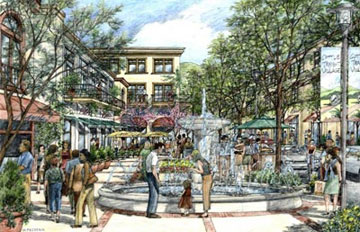The rising demand and development of ‘TOD’s

Since transit-oriented development (TOD) sites are the most logical for initial investment in city downtowns, the Urban Land Institute (ULI, the leading organization for real estate developers) brings us an update on TOD demand, trends and incentives in TODs: Location, Location, Collaboration.
Demand – By 2030, the nine-county SF Bay Area will experience added potential demand for 248,000 housing units near transit (source – ABAG, while the same demand in Denver is expected to grow to more than 138,000 households, up from 18,600 households in 2000 (source – CTOD).
Trends driving demand:
– Gas prices
– Longer commutes and heavier traffic in the suburbs
– Health impacts of worsening air pollution caused by traffic.
– On the carrot side of things (not cited in the article), cities are cool again
Government incentives to spur supply to meet demand
– Tax increment financing (TIF), an extremely effective funding tool that captures future increases in property tax revenue resulting from property improvements to help pay for those improvements;
– Land writedowns, common in redevelopment, allowing a municipality or public owner to sell a site at a reduced price;
– Fee waivers, which provide incentives for development and redevelopment, particularly on abandoned sites and high-risk properties.
These help as well.
Image: Hitachi Transit Village, San Jose. TODs apply to both small town and big cities, both light rail and bus stations (and with BRT, buses may soon be ‘cooler’ than light rail).

Leave a Reply